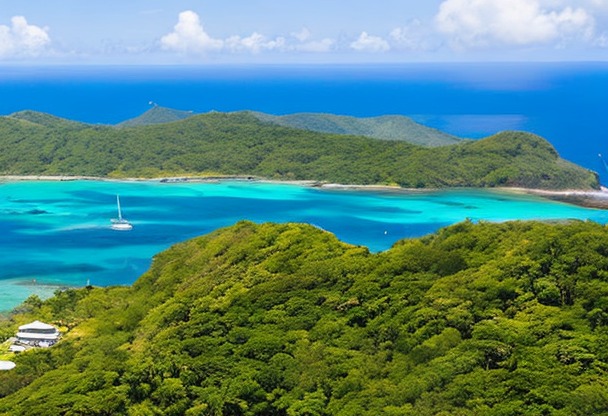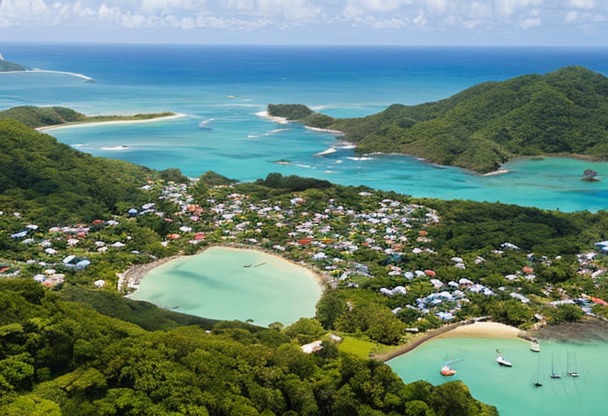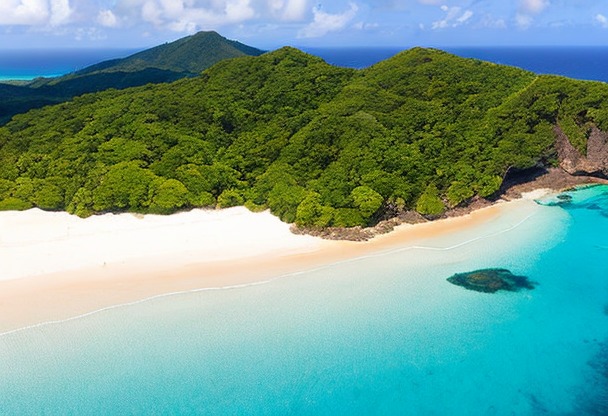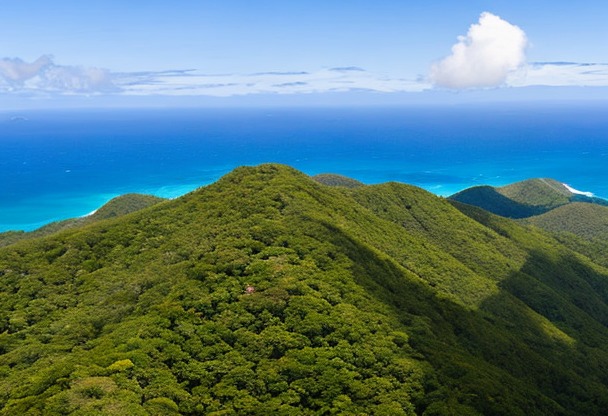WHEN TO TRAVEL TO Trinidad and Tobago
Choosing the right time for your trip to Trinidad and Tobago can make all the difference. It's important to consider weather elements, seasonal events and busy tourist periods to maximize your travel experience.

Location
Climate
Major cultural events
Trinidad and Tobago's cultural life is rich and diverse. Here are just a few of the not-to-be-missed events you can attend:- Trinidad Carnival: This major event usually takes place in February or March, depending on the dates of Lent. It's a colorful celebration, with parades, concerts and traditional costumes. It's one of the biggest carnivals in the Caribbean, and a highlight of the year not to be missed.
- Tobago Heritage Festival : This festival takes place in July and celebrates the local culture and traditions of the island of Tobago. You'll discover dancing, singing, plays and typical gastronomy. It's a great way to get to know the island's rich culture.
- Independence Day: August 31 is an important day for Trinidad and Tobago, as it celebrates the country's independence. Events and festivities are organized throughout the country to mark this historic occasion.
Public holidays
In addition to major cultural events, it's important to take public holidays into account when planning your trip to Trinidad and Tobago. Here are some of the main public holidays:- New Year's Day (January 1)
- National Heroes' Day (March 24)
- Good Friday and Easter Monday (dates vary)
- Labour Day (June 19)
- Emancipation Day (August 1)
- Independence Day (August 31)
- Discovery Day (October 12)
- Christmas (December 25) and Boxing Day (December 26)
Low and high season
Trinidad and Tobago's tropical climate means you can enjoy its beaches and scenery all year round. However, some periods are more favorable to tourism than others:High season (January-April)
Trinidad and Tobago's peak tourist season runs from January to April. During these months, the weather is generally sunny and dry, making it an ideal time to enjoy beaches and water sports. This is also the period when Trinidad's famous Carnival takes place. However, it should also be noted that prices can be higher during the high season, due to high tourist demand. If you wish to travel during this period, it is advisable to book your accommodation and flights in advance to benefit from the best rates.Low season (May-December)
Trinidad and Tobago's low season extends from May to December. This is a period less frequented by tourists, which means that accommodation and flight prices are often more affordable. On the other hand, the weather can be wetter and rainier, especially between June and November, during the hurricane season. Although the days can be a little wetter, the low season remains a good time to visit Trinidad and Tobago. Temperatures remain pleasant and rainfall is generally short and localized, leaving plenty of time to enjoy outdoor activities.Insurance

Your credit card does not cover you in all situations, that is whyIt is essential to take out insurance before you leave to avoid any unpleasant surprises. If you need to see a doctor or be hospitalized, in some countries, medical costs are very high and you will then find yourself having to pay several thousand euros.
Our partner Chapka Insurance proposes the contract CAP ASSISTANCE 24/24 with many essential guarantees.


Flights

Your flight has been cancelled or delayed ?
You may be eligible for a compensation of up to €600 ! For this, lawyers are responsible for handling your claim with the airline and are only paid when the reimbursement is effective.
In conclusion, no financial risk for you, only advantages!
Key immigration figures for Trinidad and Tobago
In 2020, the total number of foreigners entering Trinidad and Tobago was around 19,000 peopleThis was down on previous years due to the restrictions imposed by the COVID-19 pandemic. These entries included :- Tourists come to enjoy the paradisiacal beaches and local festivities,
- Migrant workers who have come to contribute to the country's economic development,
- International students enrolled at local universities,
- Refugees and asylum seekers fleeing conflict or persecution in their home countries.
Population growth rate and net migration
The population growth rate in Trinidad and Tobago is around 0.3 % per year. Net migration, i.e. the difference between the number of immigrants and emigrants, has been positive for several years, with a net migration of around +2,000 people in 2020.Most popular visas in Trinidad and Tobago
Several types of visas are available for foreigners wishing to visit Trinidad and Tobago:Tourist visa
The tourist visa is intended for people wishing to stay temporarily in the country for a vacation, to visit friends or family, or to take part in cultural or sporting events. It is generally valid for a period of 30 daysrenewable on site.Work visa
The work visa is granted to foreigners who have a job offer in Trinidad and Tobago. It is valid until the end of the employment contract, and can be extended if the employer wishes to retain the services of the migrant worker. The sectors that employ the most foreigners in the country are :- The oil and gas industry,
- Construction,
- Tourism and hospitality,
- Financial services.
Student visa
Student visas are issued to people wishing to study in Trinidad and Tobago. It is valid for the duration of the studies and can be renewed if the student wishes to continue his or her studies in the country.Resident visa
The resident visa is intended for foreigners wishing to settle permanently in Trinidad and Tobago. To obtain this type of visa, certain conditions must generally be met, such as :- Have a stable job,
- Sufficient financial resources,
- Not represent a threat to public or national security.
International tourism figures for Trinidad and Tobago
Trinidad and Tobago is a popular tourist destination, notably for its heavenly beaches, vibrant culture and festive events such as the famous Port-of-Spain Carnival. Here are some key figures for international tourism in the country:Number of international tourists
In 2019, before the COVID-19 pandemic, Trinidad and Tobago welcomed nearly 380,000 international tourists. However, due to travel restrictions and containment measures, this figure fell considerably in 2020.Tourist origin
The main countries of origin of tourists to Trinidad and Tobago are :- The United States,
- Canada,
- The United Kingdom,
- There Barbados,
- French Guiana.
Tourism's contribution to the economy
The tourism sector is an important pillar of Trinidad and Tobago's economy. It represents around 7 % of GDP of the country and employs nearly 40,000 people. The local currency, the Trinidad and Tobago dollar (TTD), also benefits from the influx of foreign currency generated by tourists. Immigration and international tourism play a key role in Trinidad and Tobago's economy and demographics. The most popular visas include tourist, work, student and resident visas. Despite the impact of the COVID-19 pandemic on these figures, it is likely that interest in this Caribbean destination will continue to grow over the next few years.

